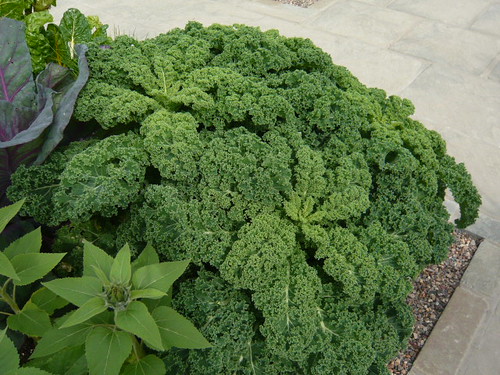Growing and Harvesting Curly Kale

Kale or borecole has returned to popularity as a vegetable. Kale is a form of cabbage Brassica oleracea Acephala and has green or purple leaves.
Growing Curly Kale
- The leaves do not form a cabbage head but remain open.
- Some varieties have flat leaves but the flavour and texture is not as refined. These leaves are often used as animal feed.
- Baby leaves can be used in a salad and have a peppery taste.
- Black Tuscany Kale has attractive dark green, deeply savoyed, strap-like leaves.
- The traditional winter hardiness makes this a useful winter to spring vegetable at a time when fresh garden produce is scarce.
- F1 Kale Reflex has more intensely curled, succulent and nutritious, dark green leaves which stand well without yellowing.
- Grow Kale from seeds planted in February or March. Some varieties supplied by Thompson Morgan can be grown inside for salads.
Eat the Seasons says ‘Kale is a very handy ingredient for seasonal eaters as it is one of the few green vegetables that is more abundant and flavourful during the coldest months of the year.’
Harvesting Kale
- Choose a good variety and pick the greenstuff when it is young and tender .
- Pick from the crown of the plant from November onwards.
- Remove a few young leaves each time you pick.
- Use a sharp knife or a sharp downwards tug.
- Do not gather mature or yellowing leaves for kitchen use as they will be bitter.
- Stripping of the crown will stimulate the development of succulent side shoots.
For more information on Ornamental Kale read
3 thoughts on “Growing and Harvesting Curly Kale”
Kale is so good for you and I think alot of people forget that, we always grow Kale, have you ever tried roasted kale? Heres what I do with it
you will need the following
4 cups firmly-packed kale
1 Tbsp. extra virgin olive oil
1 tsp. good-quality sea salt
Preheat oven to about 375 degrees F. Then wash and trim the kale: making sure you peel off all the tough stems. You can do this by folding the kale leaves in half and stripping the stems off. Toss with extra virgin olive oil. Roast it for five minutes. Then turn kale over and roast for another 7 to 10 minutes or until kale turns brown and becomes paper thin and brittle. When that has happened you should remove it from oven and sprinkle with a good sea salt such as Maldon. Serve it straight away
Comments are closed.